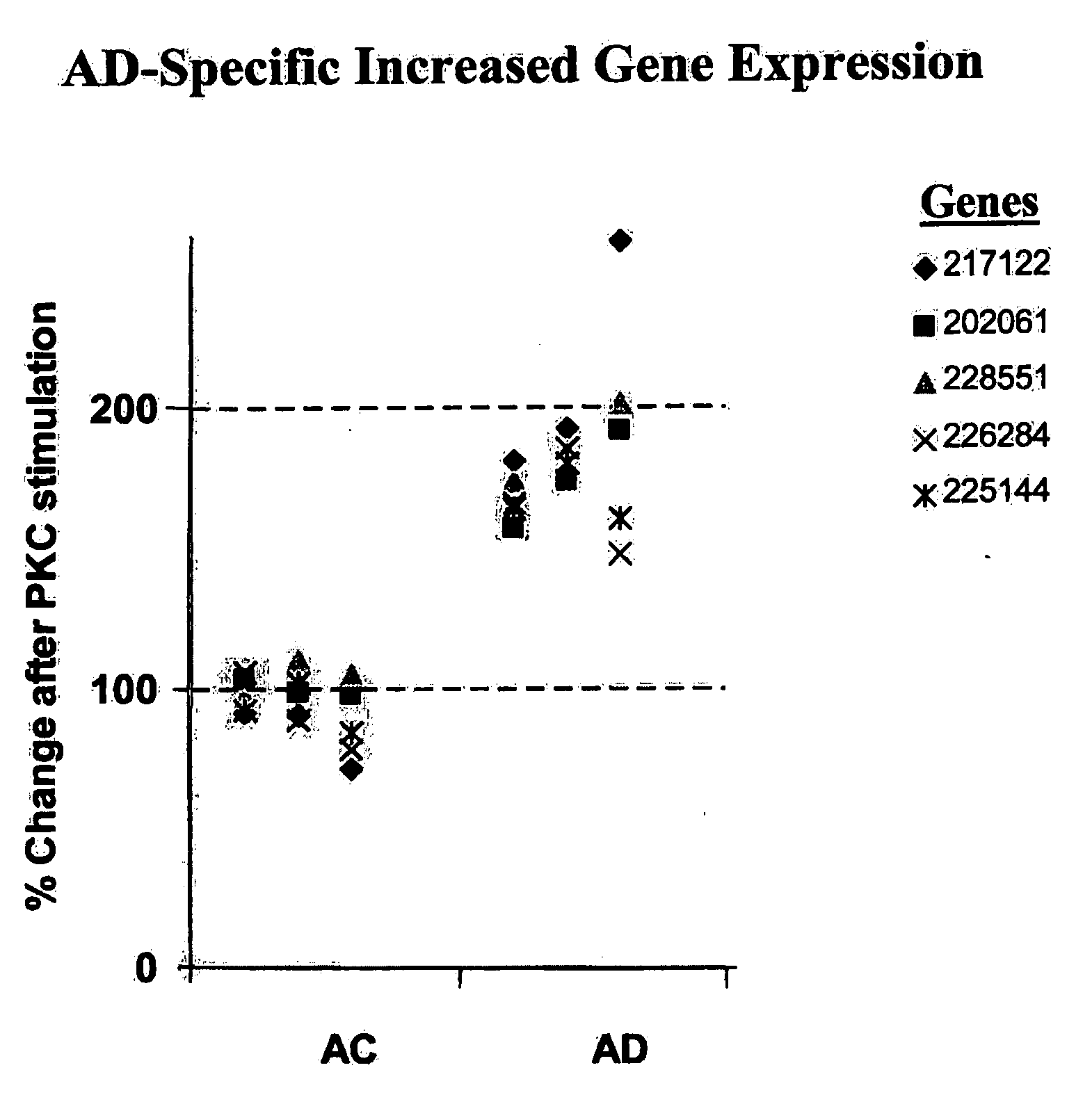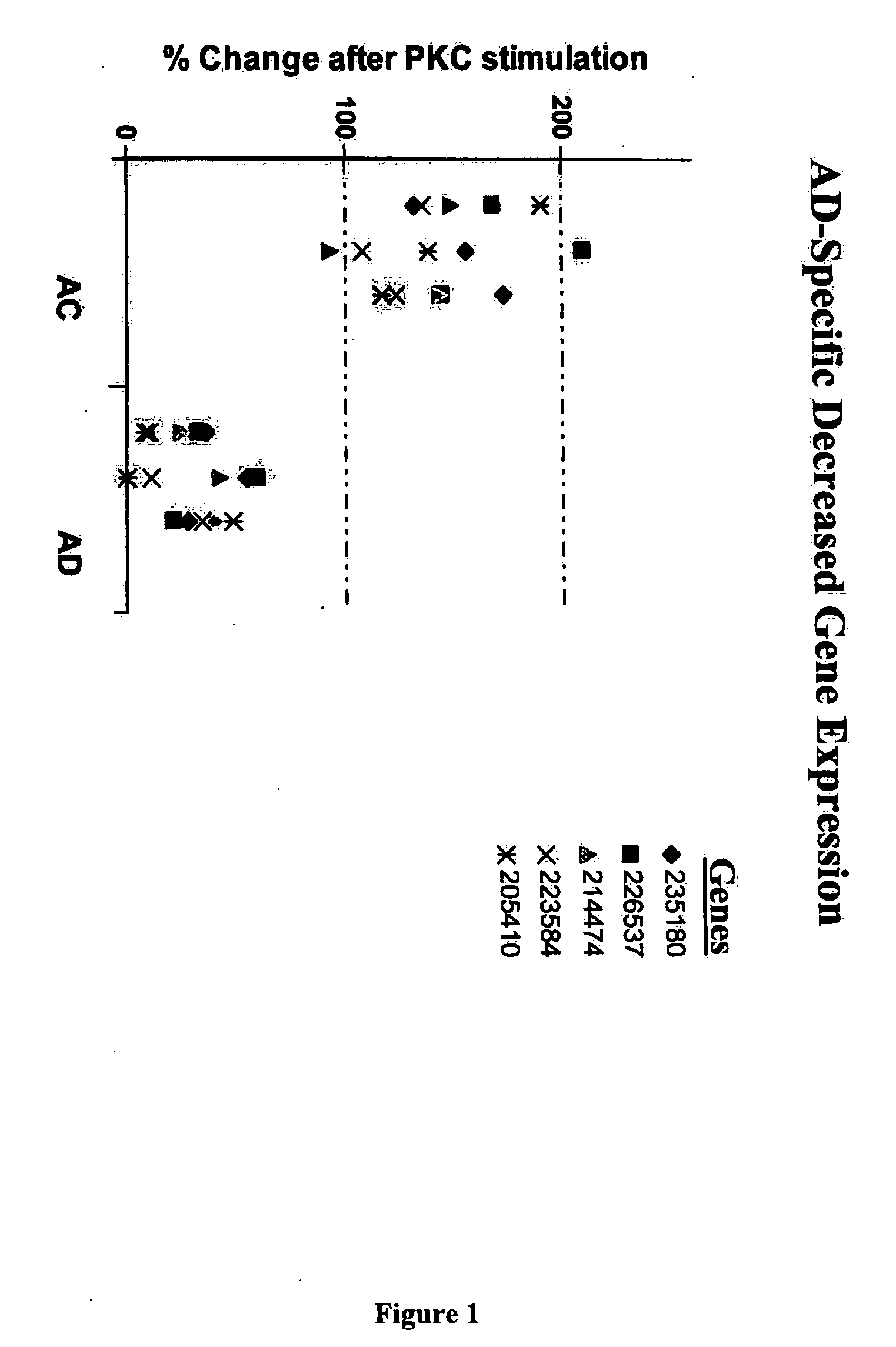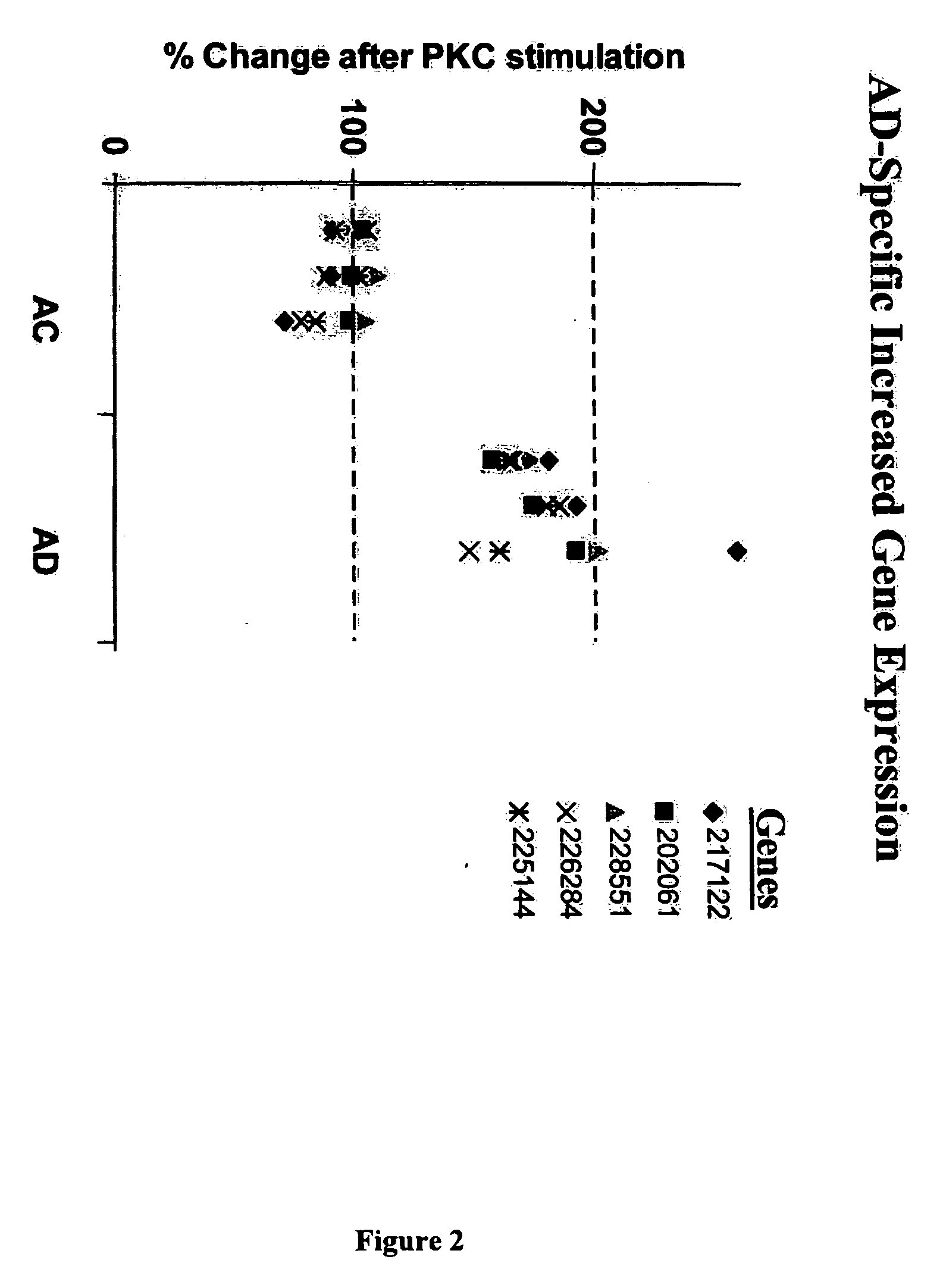Stimulus-Elicited Genomic Profile Markers of Alzheimer's Disease
a technology of alzheimer's disease and genomic profile, applied in the field of alzheimer's disease diagnosis, can solve the problems of limited prophylactic intervention opportunity, death, and deterioration of mental health, and achieve the effect of improving the accuracy of the diagnosis and accuracy of the results
- Summary
- Abstract
- Description
- Claims
- Application Information
AI Technical Summary
Problems solved by technology
Method used
Image
Examples
example 1
Determination of Differentially-Expressed Genes in PKC-Activated AD Cells
[0063]This example describes the identification of differentially-expressed genes in AD cells according to the method of the present invention.
Materials and Methods
[0064]Bradykinin (BK; molecular weight, 1,060.2) was purchased from Calbiochem (San Diego, Calif.).
[0065]Skin Fibroblast Cell Culture. Human skin fibroblast cell culture systems were used for these studies. Banked skin fibroblasts cells with the diagnoses AD and age-matched control from the Coriell Institute of Medical Research were cultured (supplemented with 10% serum and penicillin / streptomycin) at 37° C. with 5% CO2 to the 90-100% confluence stage in 25-ml cell culture flasks. Cells were “starved” in serum-free medium (DMEM) for 24 h. A solution of 10 nM BK (in DMSO) was prepared in DMEM with 10% serum. Seven milliliters of the 10 nM BK solution was added to the culture flasks and incubated at 37° C. for 10 min. For the controls, the same amount ...
PUM
| Property | Measurement | Unit |
|---|---|---|
| Digital information | aaaaa | aaaaa |
| Fraction | aaaaa | aaaaa |
| Fraction | aaaaa | aaaaa |
Abstract
Description
Claims
Application Information
 Login to View More
Login to View More - R&D
- Intellectual Property
- Life Sciences
- Materials
- Tech Scout
- Unparalleled Data Quality
- Higher Quality Content
- 60% Fewer Hallucinations
Browse by: Latest US Patents, China's latest patents, Technical Efficacy Thesaurus, Application Domain, Technology Topic, Popular Technical Reports.
© 2025 PatSnap. All rights reserved.Legal|Privacy policy|Modern Slavery Act Transparency Statement|Sitemap|About US| Contact US: help@patsnap.com



